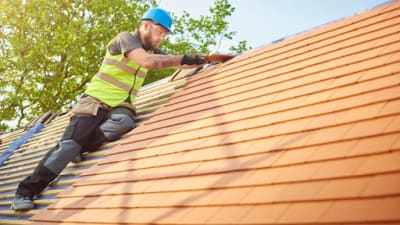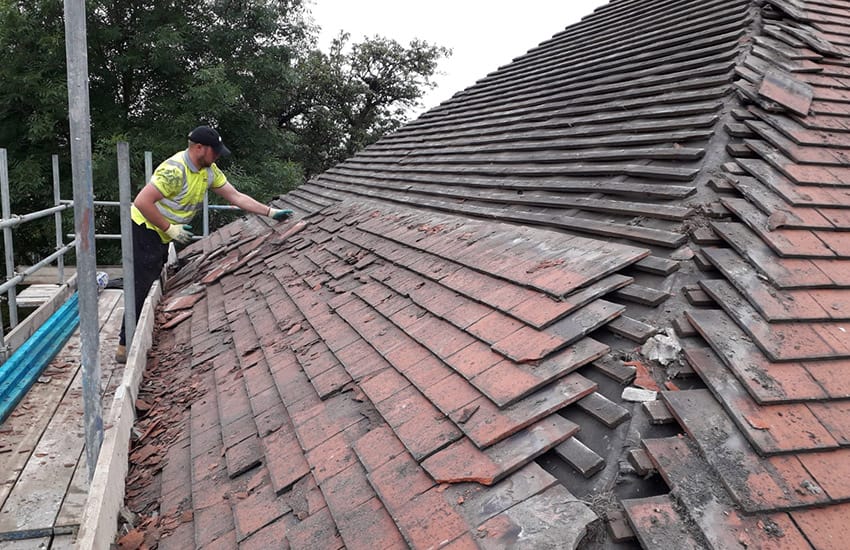Roof Repair Oahu: Quick and Affordable Roof Repairs Near You
Roof Repair Oahu: Quick and Affordable Roof Repairs Near You
Blog Article
Recognizing the Various Kinds of Roofing Systems: A Comprehensive Guide for Homeowners
With a variety of options-- ranging from the conventional gable to the contemporary flat-- each type presents unique benefits and challenges that need to line up with the house owner's environmental considerations and particular demands. As we check out the intricacies of various roofing types, it ends up being evident that one size does not fit all; the best selection might shock you.
Saddleback Roof
Gable roofing systems, defined by their triangular form, are amongst one of the most prominent roof styles due to their simpleness and efficiency in shedding water and snow. This style features 2 sloping sides that fulfill at a ridge, enabling efficient water drainage and reducing the risk of water build-up. The steep pitch commonly related to saddleback roofs boosts their capability to deal with heavy rainfall, making them ideal for different environments.
Along with their practical benefits, gable roof coverings provide visual flexibility. They can be adapted to various architectural styles, from typical to modern-day homes. The layout can likewise suit added features such as dormer home windows, which improve natural light and ventilation in the attic room room.
In addition, gable roof coverings give sufficient space for insulation, adding to energy performance. House owners can pick from a variety of roof products, including asphalt tiles, steel, and tiles, even more boosting personalization options.
Regardless of their advantages, gable roofing systems might need extra assistance in areas prone to high winds or heavy snowfall. Overall, the saddleback roof stays a preferred option because of its mix of performance, durability, and aesthetic allure.
Flat Roofs
Flat roofs are typically acknowledged for their minimal design and functional applications, specifically in industrial and industrial settings (oahu roofing). These roofing systems include a almost horizontal or straight surface area, which permits easy building and construction and flexible space application. While they might do not have the aesthetic charm of angled roofs, flat roofs supply many advantages, specifically in metropolitan settings where maximizing room is vital
One of the main advantages of level roofings is their accessibility. House owners can make use of the roof covering room for numerous objectives, such as rooftop yards, terraces, or photovoltaic panel setups. Furthermore, flat roofing systems are normally much more cost-efficient to preserve and install contrasted to their sloped equivalents, as they call for fewer products and labor.
Nonetheless, flat roofings do present particular difficulties. Appropriate drainage is necessary to protect against water merging, which can result in leakages and structural damages. For this reason, choosing high-grade waterproofing materials and routine inspections are important for guaranteeing longevity. Typical materials made use of for level roofing systems consist of built-up roof (BUR), changed bitumen, and single-ply membranes, each offering unique benefits. Overall, level roofings function as a versatile and practical selection for lots of house owners and organizations alike.
Hip Roofs
Hip roofings are defined by their sloped sides that converge on top, forming a ridge. This layout stands out from gable roof coverings, as all four sides of a hip roofing system incline downwards toward the walls, supplying an extra stable structure. The angle of the inclines can differ, permitting versatility in building aesthetics and capability.
One of the key benefits of hip roof coverings is their capability to withstand hefty winds and negative weather. The sloped surfaces enable much better water drainage, decreasing the threat of leaks and water damage. Furthermore, hip roof coverings offer enhanced attic room area, which can be utilized for storage space or perhaps converted into habitable locations.
Nonetheless, constructing a hip roofing can be a lot more complex and pricey than easier roofing kinds, such as gable roofing systems. The extra product and labor associated with developing the inclines and ensuring proper architectural stability can cause higher expenditures. In spite of these disadvantages, many homeowners favor hip roofs for their sturdiness, aesthetic appeal, and potential for power efficiency.
Mansard Roof Coverings
Mansard roofs, frequently recognized by their one-of-a-kind four-sided layout, feature two slopes on each side, with the reduced incline being steeper than the top. This building design, stemming from France in the 17th century, is not only aesthetically appealing but useful, as it optimizes the useful room in the upper floorings of a structure. The steep lower incline enables even more headroom, making it a perfect selection for attics or lofts, which can be exchanged living areas.
Mansard roof coverings are identified by their adaptability, accommodating different architectural styles, from conventional to modern. They can be created with various products, including asphalt roof shingles, slate, or metal, giving homeowners with a variety of options to match their budget plans and preferences. Additionally, the layout permits the combination of dormer home windows, boosting natural light and ventilation in the upper levels.
However, it is vital to consider the prospective drawbacks. Mansard roofs might call for even more upkeep as a result of the complexity of their style, and their high inclines can be testing for snow and rain drainage. Generally, mansard roofs incorporate beauty with usefulness, making them a prominent choice among these details house owners seeking unique building functions.
Dropped Roofing Systems
As homeowners progressively seek simplicity and capability in their architectural layouts, shed roof coverings have become a prominent choice. Identified by a solitary sloping aircraft, a shed roofing offers a minimalist aesthetic that matches various home styles, from modern to rustic.
One of the key advantages of a shed roof covering is its simple construction, which often converts to use this link reduce labor and material costs. This design enables efficient water drainage, minimizing the threat of leaks and water damages. In addition, the upright slope offers adequate area for skylights, improving natural light within the interior.
Shed roofing systems likewise supply convenience in regards to use. They can be efficiently incorporated into enhancements, garages, or outside structures like sheds and structures. In addition, this roof covering design can fit various roof materials, consisting of metal, asphalt shingles, or perhaps eco-friendly roof coverings, straightening with green initiatives.
Nonetheless, it is essential to take into consideration regional environment problems, as hefty snow loads may necessitate adjustments to the roof covering's angle or framework. In general, shed roof coverings offer a sensible and visually pleasing option for home owners aiming to make the most of functionality without jeopardizing design.
Conclusion


Gable roofings, defined by their triangular shape, are among the most popular roof covering styles due to visit the website their simplicity and performance in dropping water and snow. oahu roofing. The steep pitch commonly connected with gable roofing systems enhances their ability to manage heavy rainfall, making them appropriate for various climates
While they might do not have the visual charm of pitched roofs, flat roofing systems supply many benefits, especially in city environments where taking full advantage of space is crucial.

Report this page